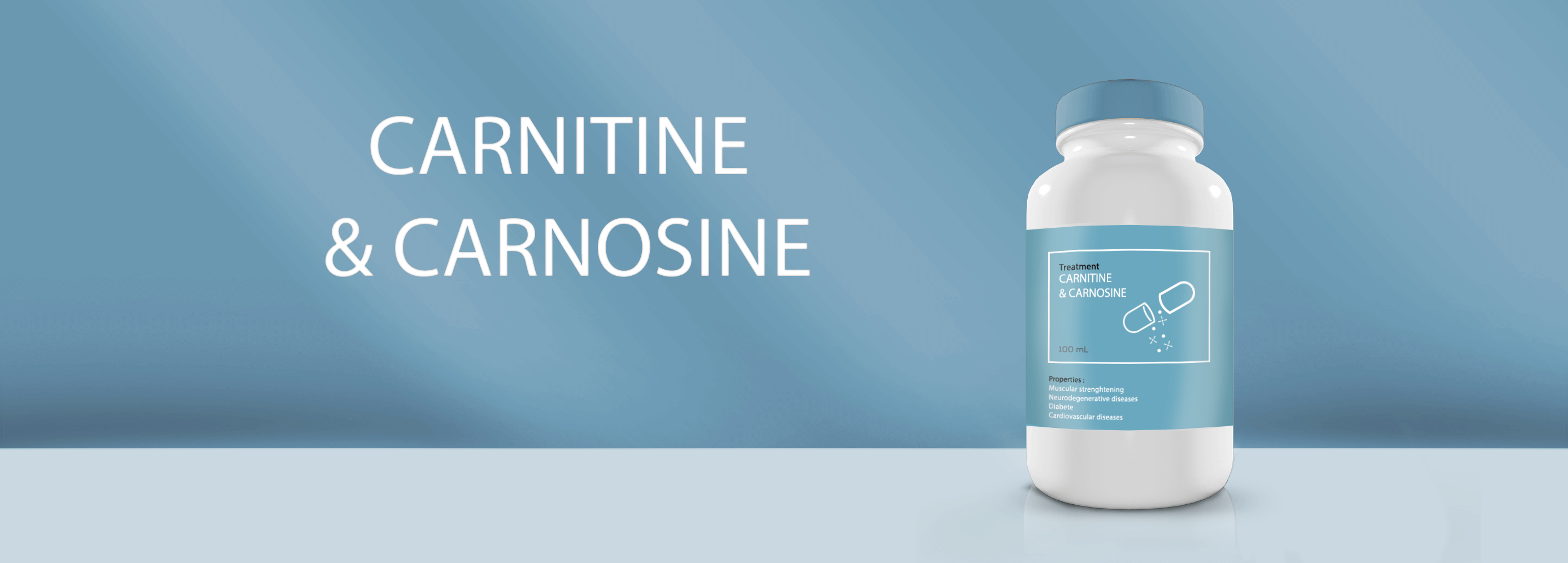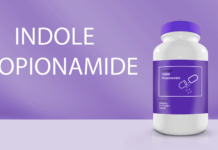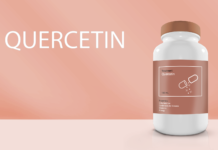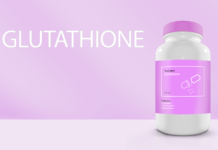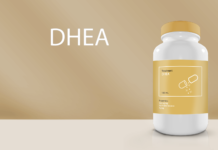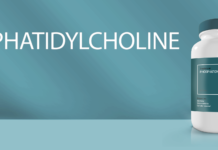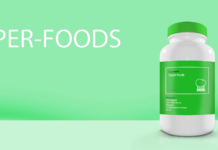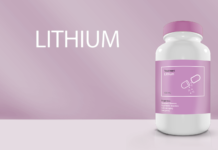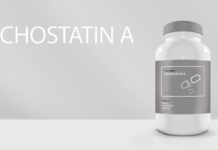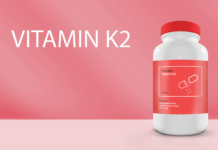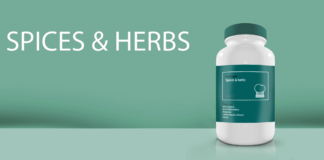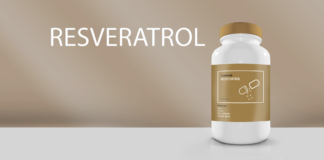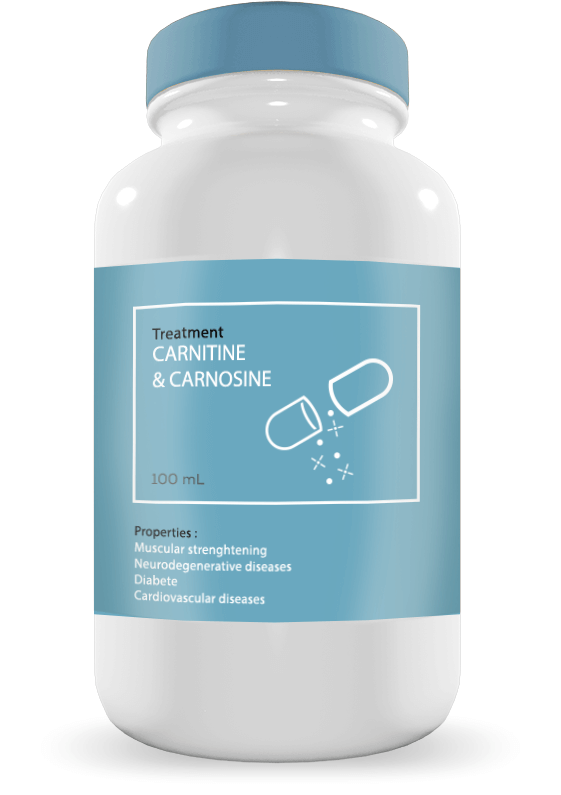
Fact sheet
Natural molecules against aging
Carnitine and carnosine are peptides composed of amino acids, lysine and methionine for the first, β-alanine and histidine for the second. They were discovered in the early 20th century, but their applications in age-related diseases are relatively recent, with a number of studies increasing steadily since the early 2000s. Initially, carnitine is found in red meats, some dairy products and avocado, and carnosine in seafood and protein-rich meats. Today, they both exist as very popular supplements.
Building muscle to protect us
Carnitine & carnosine help maintain our brains
Joint supplementation of both carnitine and carnosine appears to have a beneficial effect on neurodegenerative diseases, particularly Alzheimer’s disease[8]. Carnosine reduces amyloid plaque, responsible for the poor connection between neurons and their progressive death, while carnitine reduces memory loss[9]. In addition to its antioxidant and mitochondrial booster action, carnosine is a chelator, i.e. it acts as a heavy metal trap, toxic elements for our brain[7]. In parallel, carnitine and carnosine appear to increase sugar assimilation in diabetics, reducing circulating sugar levels[10, 11]. They also have a role in diabetic neuropathies, a side effect of diabetes that damages the brain[11]. All these actions protect our brain and keep it healthy as we age.
- Number of publications: Approximately 1000
- Availability: over-the-counter
- Route: oral
- Dosage: for carnitine, between 1 and 4 g / day, fasting. For carnosine about 1 g / day in two doses (one in the morning and one in the afternoon) to spread the intake.
No adverse reactions at the indicated doses have been established. However, in case of overdose, carnosine may cause insomnia and carnitine may cause stomach pain.
The natural forms of carnitine and carnosine should be favoured, their bioavailability being more important than that of synthetic forms (check the composition of your food supplements). For carnitine, you should avoid taking D-carnitine, which interferes with the natural L-carnitine provided by your diet. Finally, it is quite possible to combine L-carnitine, L-carnosine and acetyl-L-carnitine to benefit from their complementary beneficial effects.
[1] Broad EM, Maughan RJ, Galloway SD. Effects of four weeks L-carnitine L-tartrate ingestion on substrate utilization during prolonged exercise. Int J Sport Nutr Exerc Metab. 2005;15(6):665-79
[2] Pooyandjoo M, Nouhi M, Shab-Bidar S, Djafarian K, Olyaeemanesh A.The effect of (L-)carnitine on weight loss in adults: a systematic review and meta-analysis of randomized controlled trials. Obes Rev. 2016;17(10):970-6
[3] Arrigoni-Martelli E, Caso V, Carnitine protects mitochondria and removes toxic acyls from xenobiotics. Drugs Exp Clin Res. 2001; 27(1):27-49
[4] Sawicka AK, Hartmane D, Lipinska P, Wojtowicz E, Lysiak-Szydlowska W, Olek RA. l-Carnitine Supplementation in Older Women. A Pilot Study on Aging Skeletal Muscle Mass and Function. Nutrients. 2018;10(2):255
[5] Ussher JR, Lopaschuk GD, Arduini A. Gut microbiota metabolism of L-carnitine and cardiovascular risk. Atherosclerosis. 2013;231(2):456-61
[6] Brown BE, Kim CH et al. Supplementation with carnosine decreases plasma triglycerides and modulates atherosclerotic plaque composition in diabetic apo E(-/-) mice. Atherosclerosis. 2014;232(2):403-9
[7] Boldyrev AA, Aldini G, Derave W. Physiology and pathophysiology of carnosine. Physiol Rev. 2013;93(4):1803-45
[8] Corona C, Frazzini V, Silvestri E, et al. Effects of Dietary Supplementation of Carnosine on Mitochondrial Dysfunction, Amyloid Pathology, and Cognitive Deficits in 3xTg-AD Mice. Feany M, ed. PLoS ONE. 2011;6(3):e17971
[9] Jiang X, Tian Q, Wang Y, Zhou XW, Xie JZ, Wang JZ, Zhu LQ.Acetyl-L-carnitine ameliorates spatial memory deficits induced by inhibition of phosphoinositol-3 kinase and protein kinase C. J Neurochem. 2011;118(5):864-78
[10] Giancaterini A, et al. Acetyl-L-carnitine infusion increases glucose disposal in type 2 diabetic patients. Metabolism 2000;49(6):704-8
[11] Yamano T,et al. Effect of L-carnosine on the hyperglycemia caused by intracranial injection of 2-deoxy-D-glucose in rats. Neurosci Lett 2001;313(1-2):78-82.
Dr. Marion Tible

Author/Reviewer
Auteure/Relectrice
Marion Tible has a PhD in cellular biology and physiopathology. Formerly a researcher in thematics varying from cardiology to neurodegenerative diseases, she is now part of Long Long Life team and is involved in scientific writing and anti-aging research.
More about the Long Long Life team
Marion Tible est docteur en biologie cellulaire et physiopathologie. Ancienne chercheuse dans des thématiques oscillant de la cardiologie aux maladies neurodégénératives, elle est aujourd’hui impliquée au sein de Long Long Life pour la rédaction scientifique et la recherche contre le vieillissement.
En savoir plus sur l’équipe de Long Long Life


